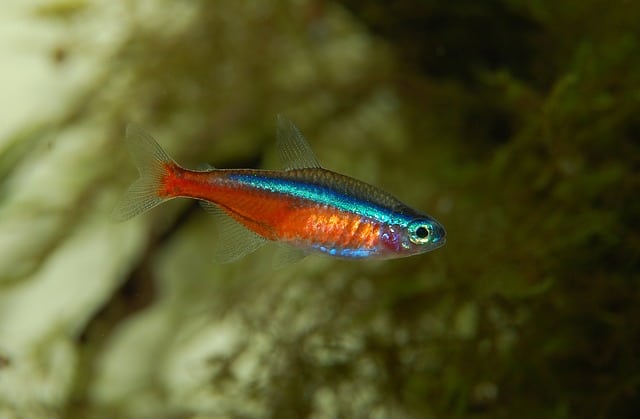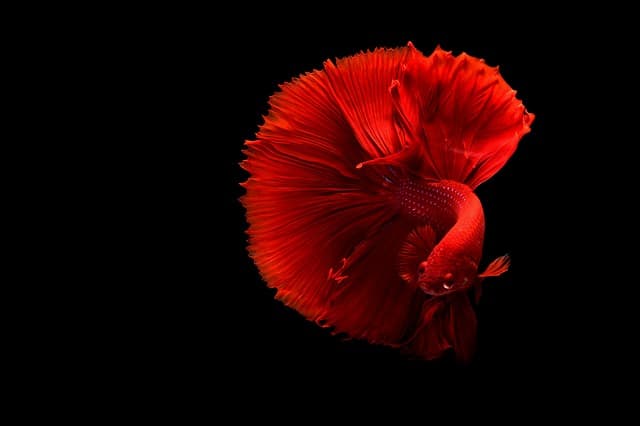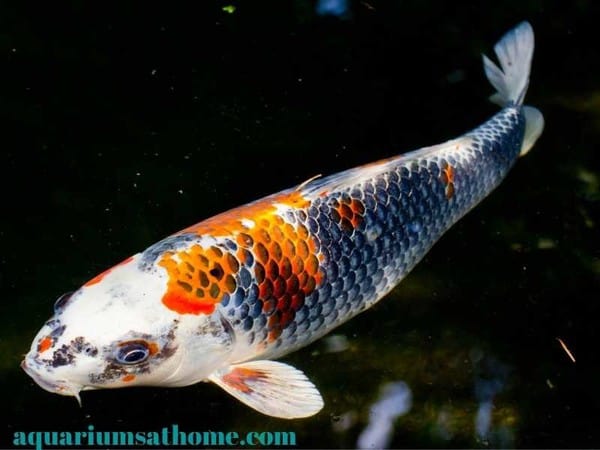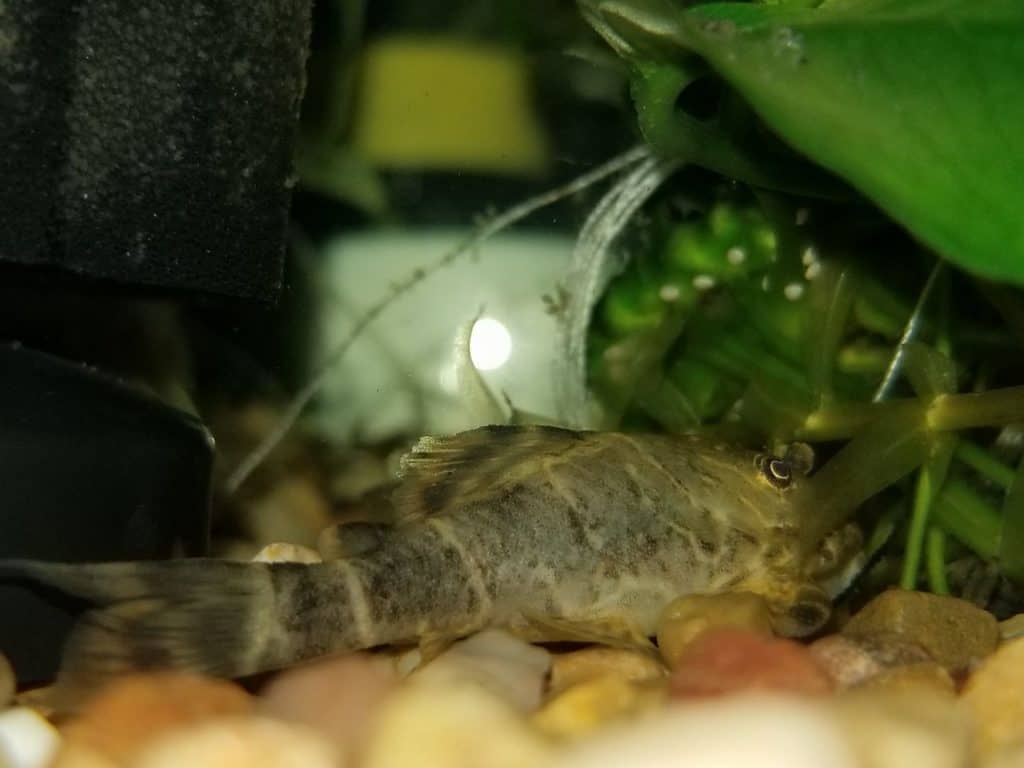Gourami fish are a preferred choice among many freshwater aquarium hobbyists. Their peaceful nature and bright colors of pink, blue, green, gold and silver add life and interest to any tank. However, sometimes these vibrant hues can fade or darken. You may be wondering why this happens? Well, the answer is as follows…
There are 3 main reasons why gourami fish turn black. One – the tank conditions are poor (too small; too much ammonia, nitrate, or nitrite in the water; inaccurate temperature and/or pH). Two – the fish is stressed or sick and suffering from disease or infection. Three – the fish is getting old and/or genetically predisposed to darkening.
Now that you know the causes of gourami fish darkening, let’s explore this topic further and in more detail. Together we’ll learn how to prevent and/or stop this from happening as well as whether it’s possible for this species to regain its vibrant shading over time. We’ll also discover how food affects fish coloring and where to purchase specialized color-enhancing fish flakes.
So, if you’re ready to learn more about gouramis and their tendency to turn black, then let’s begin!
Why is My Gourami Fish Changing Color?
The 3 main reasons why gourami fish change color include the following:
Poor Water Parameters
Unsuitable tank conditions are a leading cause of gourami fish darkening. Stress caused by high levels of toxins in the water will often reflect on your fish’s outward appearance. Too much ammonia, chlorine, chloramine, copper, lead, nitrate, or nitrite as well as inaccurate temperature and pH are all possible culprits. A too small or overstocked tank will also negatively affect the aquatic environment.
Illness or Injury
A sick fish will often change color. Fin rot and black spot disease are examples of illnesses that can cause gourami fish to blacken in appearance. A parasitic infection such as ichthyophonus or cryptobia infection – even a physical injury – may also be the source of changes in coloration. An injury resulting from an attack by another fish or an accidental hit against a sharp object in the tank can also cause discoloration.
Genetics or Advancing Age
A genetic anomaly can cause fish to turn black over time. In the case of gouramis, this abnormality is rare and may explain why 1 or 2 fish are darkening, not a school of them! Should you notice 3 or more fish changing color, then the culprit is more likely poor water conditions or disease. If your gourami fish is reaching sexual maturity or advancing in age, then he/she may also start to appear darker.
What Should I do if My Gourami Fish is Turning Black?
If you happen to notice your gourami fish changing color or turning black, you must take action immediately. Begin by testing the water parameters to ensure they’re safe and accurate. High levels of toxins in the water such as ammonia, nitrates, and nitrites or incorrect temperature and pH should be remedied as quickly as possible.
Introducing live plants may help too, especially if there are other more aggressive fish in the aquarium. Greenery provides safety and cover as well helps naturally remove toxins from the water to keep the aquatic environment clean and safe. Amazon sword, java fern, hornwort, vallisneria, and water wisteria are the best choices for a gourami tank.
As well, you should monitor your fish for signs of stress or disease. If your gourami is sluggish, stops eating, swims erratically, separates itself from its school, has spots/sores on its body, gasps for air or floats listlessly near the surface, lays motionless on the substrate, has labored breathing and clamped fins, or ‘flashes’ (rubs against objects in the tank) often, its likely sick and in need of treatment.
If your gourami fish is predisposed to darkening due to genetics or advanced age – but appears to be healthy and active otherwise – then there’s likely little cause for concern. The only time you need be concerned is if you notice your fish’s behavior changing suddenly. Keeping a close eye on your pets is the best way to ensure their safety and longevity.
What is Pseudomonas in Gourami Fish?
Pseudomonas is a common disease among dwarf gouramis. It’s caused by a bacterial infection that erodes fins and results in the fish losing their appetite and changing color. Their physical appearance becomes more faded and darker as opposed to light and bright when healthy. This disease attacks the immune system and can lead to black or red spots as well as ulcers on the body.
To treat this disease, you must medicate it using a combination of antibiotics including penicillin and/or cephalosporin with imipenem or meropenem. Ciprofloxacin is a tablet administered to sick fish for a period of 4 to 6 weeks, depending on the severity of the illness. If left untreated, it’ll likely result in the death of your pet gourami.
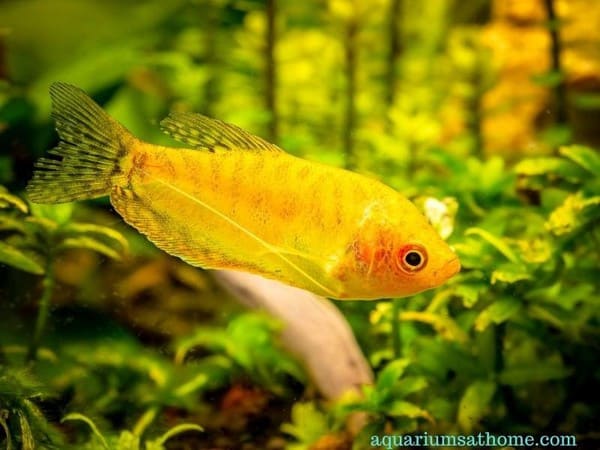
How to Prevent Gourami Fish from Turning Black?
To stop or prevent your gourami fish from turning black, it’s imperative that you keep their aquatic environment clean and safe. Testing the water parameters regularly as well as performing bi-weekly partial water changes (10% to 15%) is your best bet. The temperature in the tank should be between 74- and 79-degrees Fahrenheit with a neutral to slightly acidic pH ranging from 6.8 to 7.8.
Check out these aquarium testing kits available online through Amazon.
As well, it’s important that the aquarium is of adequate size and not overstocked. You can keep 2 gouramis (a male and a female) together in a 10-gallon tank but as soon as you introduce more fish, you must also upsize the tank. For each additional gourami, you should add an extra 5 gallons. It’s best to have just 1 male at a time with up to 3 females in a 20-gallon tank, for example.
Adding air stones to your fish tank is another way to prevent stress and illness that can alter their hue from bright to black. Water pumps and filters work to circulate air which not only keeps the tank clean, but also helps prevent oxygen deficiency. Adding the appropriate decorations (nothing sharp) and tank mates (no fast or aggressive fish) will help gouramis avoid injury which can lead to changes in coloration.
Feeding your gourami fish the right type and amount of food is also part of preventing them from turning black. Too much leftover or rotting food leads to an overabundance of organic waste. As well, overfeeding can increase the amount of toxic ammonia caused by an uptake in fecal matter. It’s best to feed them once a day with just enough food that they can eat in 2 minutes.
Will My Gourami Fish Return to its Normal Color?
If you treat a sick gourami fish and completely eradicate the illness, it should begin to slowly regain its coloring. If coloration doesn’t return, at the very least, the blackness shouldn’t progress any further. You can try feeding your fish some color-enhancing food such as spirulina flakes or algae rounds. As most gouramis are omnivorous, they require both plant- and meat-based foods for optimal health.
Check out these color-enhancing fish flakes available online through Amazon.
Conclusion
To conclude, inaccurate water parameters, stress or illness, and genetics are the main culprits of gourami fish darkening. Other reasons such as a physical injury or advanced age may also cause this species to turn black. To prevent or stop this from happening, be sure to monitor the water conditions regularly, keep the environment as clean as possible, and don’t overpopulate the tank.
I hope this article has provided you with the information you seek regarding gouramis and why they sometimes turn black. Thanks for reading and good luck with your aquarium hobby.
Related Posts
How to Breed Kissing Gourami Fish?
Can You Add a Water Conditioner While Fish Are in The Tank?



